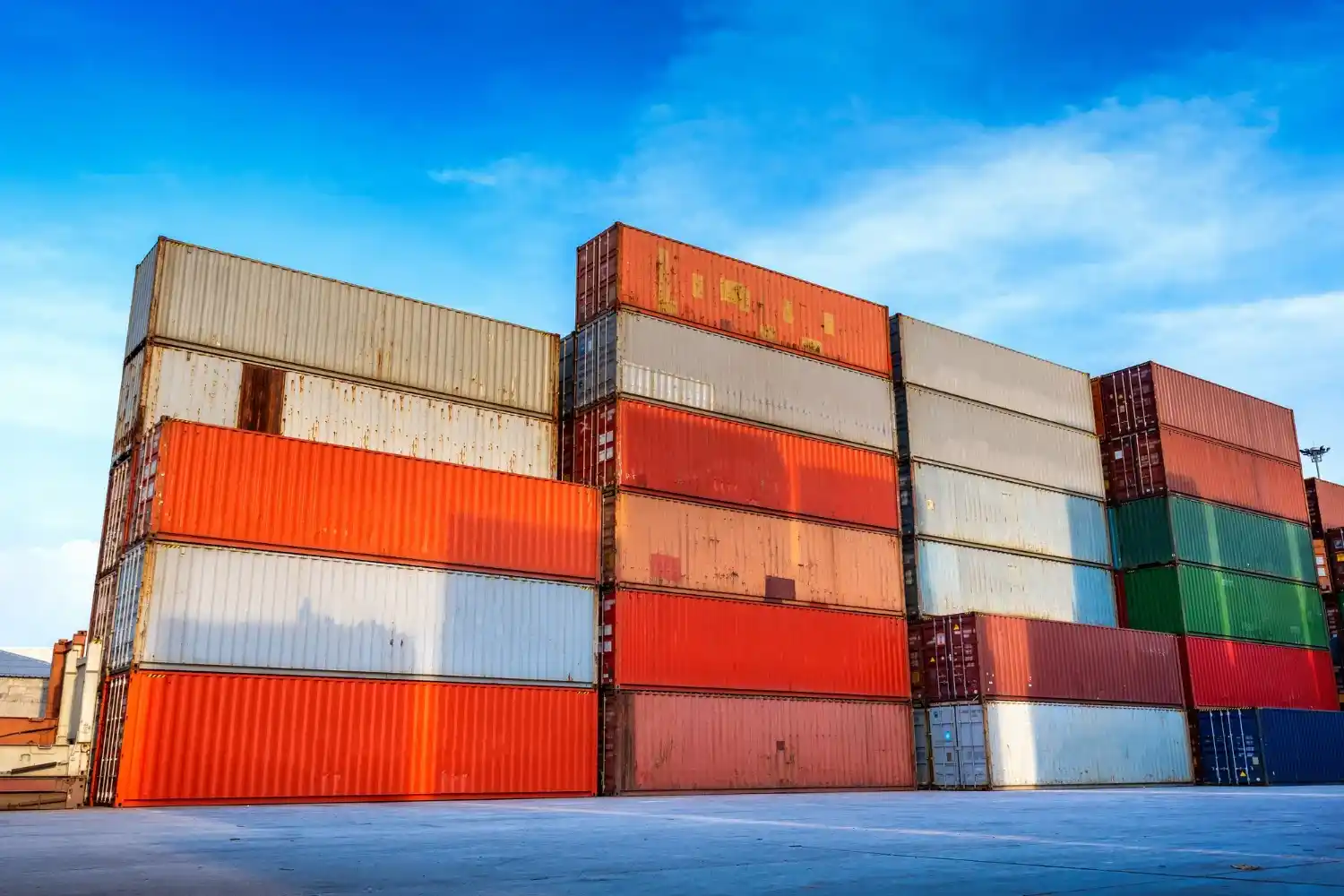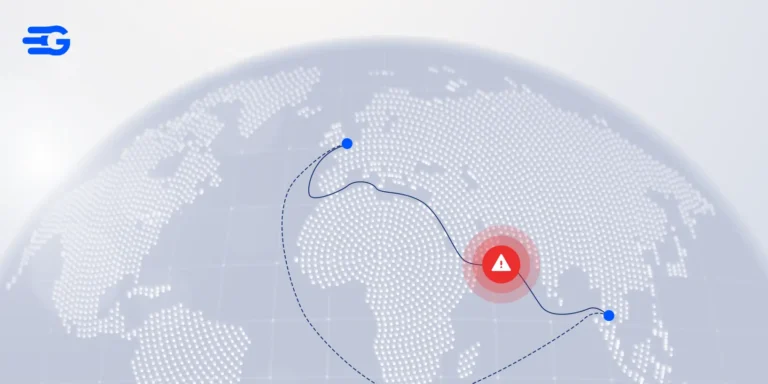Detention Charges Explained: Meaning and How to Avoid?
Shipping delays are costly for businesses. Among the many fees involved in shipping, detention charges stand out as significant. These charges can quickly add up and impact your shipping budget. Understanding what detention fees are and how to manage them is essential for businesses reliant on efficient logistics.
What is Detention Fee?
A detention fee is a penalty imposed when shipping containers are not returned to the carrier within the specified free time. This fee compensates the shipping line for the loss of container availability, ensuring that their assets remain accessible for other shipments. For businesses, exceeding the free time can lead to significant additional costs, highlighting the need for efficient container management.
Free time usually varies by agreement but typically includes a few days after cargo unloading to handle customs clearance and inland transportation. If the container is not returned promptly, detention fees begin to accrue daily.
Key Takeaways: What You Need to Know
- Detention Fees: Detention fees apply when containers are not returned to the shipping line within the agreed-upon timeframe. Both importers and exporters can incur these fees.
- Reason for Detention Fees: Shipping lines impose detention charges to compensate for the delayed return of their containers. These fees encourage efficient container management and prevent equipment shortages.
- Impact of Delays: Detention fees are calculated based on the number of days a container is overdue. Prolonged delays increase costs and affect overall logistics budgets.
- Prevention Tip: Efficient planning, timely unloading, and clear communication with shipping lines can help avoid detention charges and minimize costs.
Why Are Detention Fees Charged? The Reason Behind the Cost
Detention fees ensure shipping lines maintain efficient container availability. Containers stuck with one party disrupt the supply chain. The shipping company incurs costs when its containers are unavailable for reuse. To offset these costs and discourage delays, detention charges are applied.
How Detention Charges Impact Shipping Costs
Detention charges can significantly increase shipping expenses. When containers are held too long, businesses may face unplanned costs. This affects profit margins and can lead to strained relationships with supply chain partners. For businesses operating on tight logistics budgets, these fees can disrupt operations.
How Are Detention Charges Calculated?
Detention charges depend on three main factors:
- Daily Rate: A fixed cost charged per container for each day it exceeds the free time.
- Duration: The total number of days the container remains overdue.
- Container Type: Specialized or larger containers often have higher rates due to their limited availability.
To calculate detention charges, use the following formula:
Detention Charge = Daily Rate × Days Exceeded Free Time
For instance, if the daily rate is $100 and the container is overdue by three days, the total detention charge will be:
$100 × 3 = $300
Shipping lines or agreements might also impose tiered rates, where the daily rate increases as delays extend. Always review the terms outlined in your shipping contract to avoid unexpected fees.
Common Causes of Shipping Delays That Lead to Detention Fees
Shipping delays often result in detention charges. Here are some common causes:
- Documentation Issues: Incomplete or incorrect paperwork slows down customs clearance, delaying the release of goods and containers.
- Port Congestion: Busy ports can result in long waiting times for container loading and unloading.
- Transport Delays: Delays caused by late trucks, traffic jams, or insufficient transport capacity often lead to overdue containers.
- Unplanned Inspections: Regulatory or customs inspections can unexpectedly hold up containers, adding to delays.
- Improper Planning: A lack of coordination in scheduling container pick-ups and returns can lead to missed deadlines and detention fees.
Addressing these issues proactively, such as improving logistics planning and documentation accuracy, can reduce the risk of detention fees significantly.
Examples of Detention Charges
Let’s examine how recent disruptions, like the US port strike, have caused delays in shipments and created detention charges. These examples will help illustrate the financial impact of such delays on both exporters and importers.
Exporter:
During the US port strike, an exporter shipping electronic components from Asia faced delays due to a backlog caused by the strike. Containers, which were supposed to be unloaded within a set timeframe, remained at the port for several additional days. The delay led to detention charges of $250 per day, which impacted the exporter’s ability to meet demand and resulted in higher operational costs.
Importer:
An importer in the US who was expecting critical raw materials for manufacturing experienced delays when the strike disrupted port operations. The containers, delayed at the port for more than a week, accumulated detention charges of $200 per day, totaling over $1,400. This added unexpected costs to the business and delayed production schedules, affecting revenue generation and operational timelines.
How is the Detention Fee Different from Other Penalty Fees?
Detention fees are just one of several penalties in the logistics industry. Each charge serves a specific purpose and applies under different circumstances. A clear understanding of these fees can help businesses manage shipping costs and avoid unnecessary expenses.
Detention vs. Demurrage Charges
Demurrage charges apply when containers remain at the port terminal beyond the allocated free time for loading or unloading. These fees compensate for the storage space occupied at the port. For example, if an importer delays collecting their goods due to incomplete customs documentation, the shipping line will impose demurrage fees for each additional day the container remains at the terminal. For detailed information, you can refer to a comprehensive guide on demurrage charges.
In contrast, detention charges are levied after the container leaves the port. These fees occur when the container is not returned to the shipping line within the agreed period. While demurrage penalizes delays within the port, detention penalizes delays outside the port.
Detention vs. Per Diem Charges
Per diem charges are specific to leased equipment, such as chassis or trailers, and are incurred when these assets are not returned on time. For instance, a business leasing a chassis to transport goods must return it promptly to avoid per diem fees.
On the other hand, detention fees focus solely on the container itself. They apply when the container, once it has left the port, is not returned to the shipping line within the free period. While both fees penalize delays, per diem charges relate to leased equipment, and detention fees pertain to shipping containers.
Detention vs. Port Storage Fees
Port storage fees apply when cargo stays at the port terminal beyond the free time allocated for storage. These fees are charged based on the amount of space occupied by the cargo and the duration it remains at the terminal. For example, if goods are unloaded from a container and placed in a warehouse at the port but not moved out on time, port storage fees will accumulate.
In contrast, detention fees focus on the container itself. These charges are incurred when the container is taken out of the port but not returned to the shipping line within the agreed time frame. While port storage fees penalize delays in moving goods out of the terminal, detention fees penalize delays in returning the container.
Detention vs. Wait Time Charges
Wait time charges are imposed by transport providers when their vehicles or drivers are delayed during loading or unloading at warehouses or other facilities. These fees compensate for the time the vehicle is idly waiting due to operational inefficiencies, such as incomplete documentation or a lack of loading equipment.
On the other hand, detention fees apply to the shipping container, not the transport vehicle. These charges arise when the container is outside the port and not returned to the shipping line on time. While wait time charges are specific to the transport provider’s schedule, detention fees are specific to the container’s usage period.
Detention vs. Detention-In-Transit Charges
Detention-in-transit charges occur when containers are delayed at intermediate points along the transportation route. This could happen due to unforeseen disruptions like customs inspections or congestion at transshipment hubs. These fees compensate for the extended use of the container during transit.
In comparison, detention fees apply only when the container is with the customer or consignee outside the port and not returned as scheduled. Detention-in-transit focuses on delays within the supply chain network, while detention fees target delays at the customer’s end.
Detention vs. Per Unit Fees
Per unit fees are charged when customers exceed the agreed volume or quantity during a shipment. This might apply in cases where a shipping contract specifies a maximum number of containers or pallets, and the business exceeds that limit.
By contrast, detention fees have no direct link to shipment volume. They are strictly based on the time a container is held beyond the free period. While per unit fees are volume-based penalties, detention fees are time-based penalties for delayed returns.
How to Avoid or Minimize Detention Fees?
Reducing detention fees involves strategic planning and effective management. Here are actionable steps to minimize these charges:
- Plan Efficiently: Develop a robust container management plan to coordinate pick-ups and returns.
- Leverage Technology: Use real-time container tracking systems to monitor container locations and timelines. Digital tools can also automate alerts for due dates.
- Streamline Documentation: Ensure that all customs and shipping paperwork is accurate and complete to prevent delays during clearance.
- Communicate Regularly: Maintain open communication channels with logistics partners, freight forwarders, and transport providers.
- Partner with Reliable Providers: Choose trusted logistics providers who prioritize on-time delivery and efficient operations.
- Optimize Scheduling: Avoid peak congestion periods at ports by scheduling shipments during less busy times, if possible.
By implementing these strategies, businesses can significantly reduce detention-related costs and improve overall logistics efficiency.
Case Study: Red Sea Crisis Management
A global leader in the textile industry faced major disruptions due to the Red Sea crisis, with raw material shipments rerouted through the Cape of Good Hope. This change added 10 extra days to transit times, resulting in costly detention charges and halting production and causing losses of $2.5 million per week.
Solution:
GoComet provided the client with GoTrack’s Predictive ETA, using AIS ship locations to forecast accurate ETAs and delays. This enabled the company to adjust production schedules accordingly, minimizing downtime.
Key Takeaways:
- Predictive ETAs reduce production halts and mitigate losses.
- Accurate tracking improves operational efficiency.
- Real-time visibility ensures better production planning and customer communication.
Each situation involving detention charges may differ, and while this case study highlights a positive outcome, it’s important to remember that detention fees are often subject to complex factors. For tailored advice, it’s essential to consult with logistics experts or maritime lawyers who specialize in detention charges. They can offer guidance specific to your case and help you manage delays and avoid costly penalties in the future.
Conclusion
Detention fees can quickly escalate and disrupt your shipping budget if not managed properly. By understanding the factors that lead to these charges and how they differ from other penalty fees, businesses can take proactive steps to avoid unnecessary costs. Timely container returns, effective planning, and clear communication with logistics partners are key to minimizing detention charges.
With the right approach, you can prevent delays, save money, and keep your logistics running smoothly. In the competitive world of global trade, staying on top of detention fees could be the difference between staying profitable or facing avoidable setbacks.






